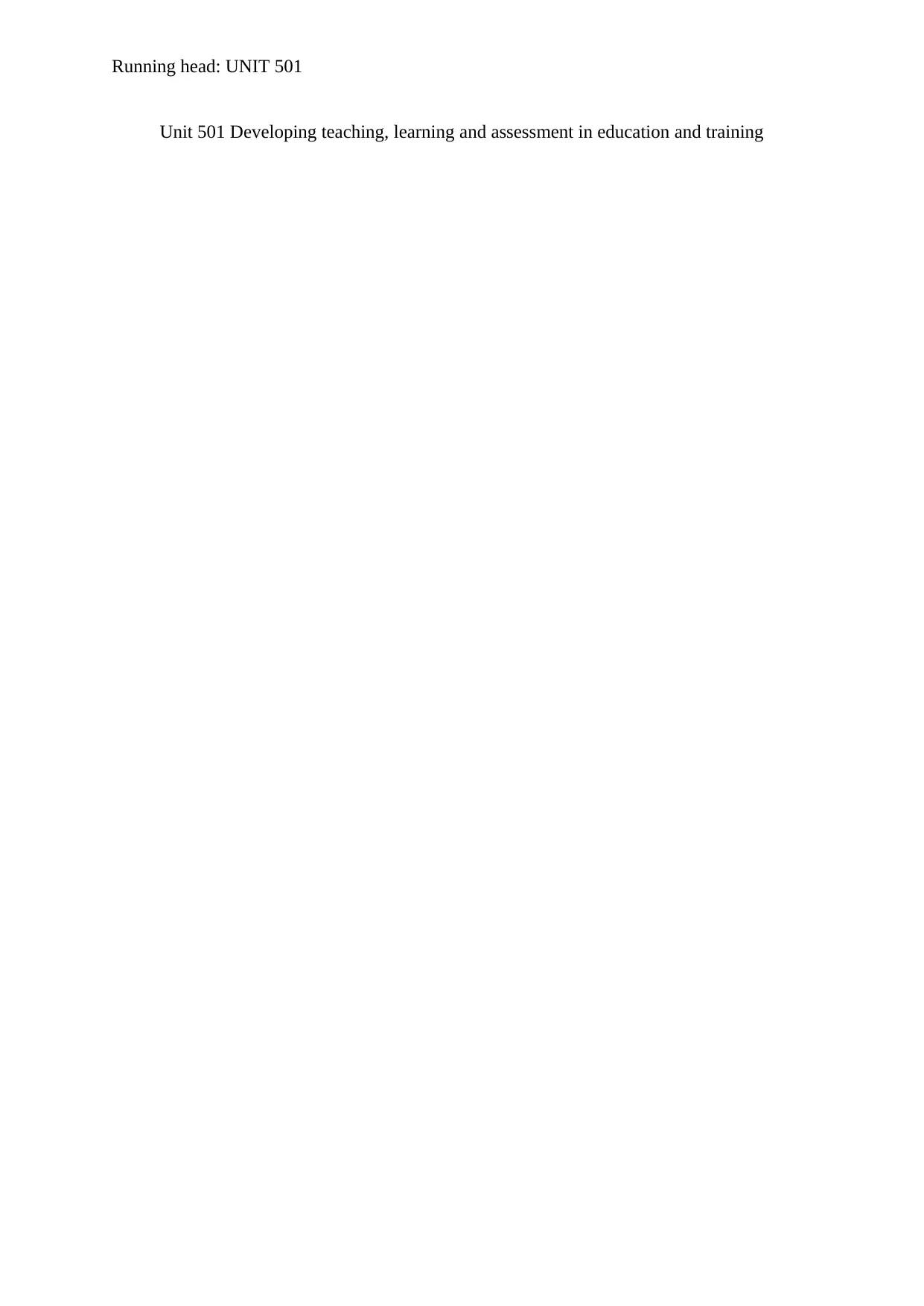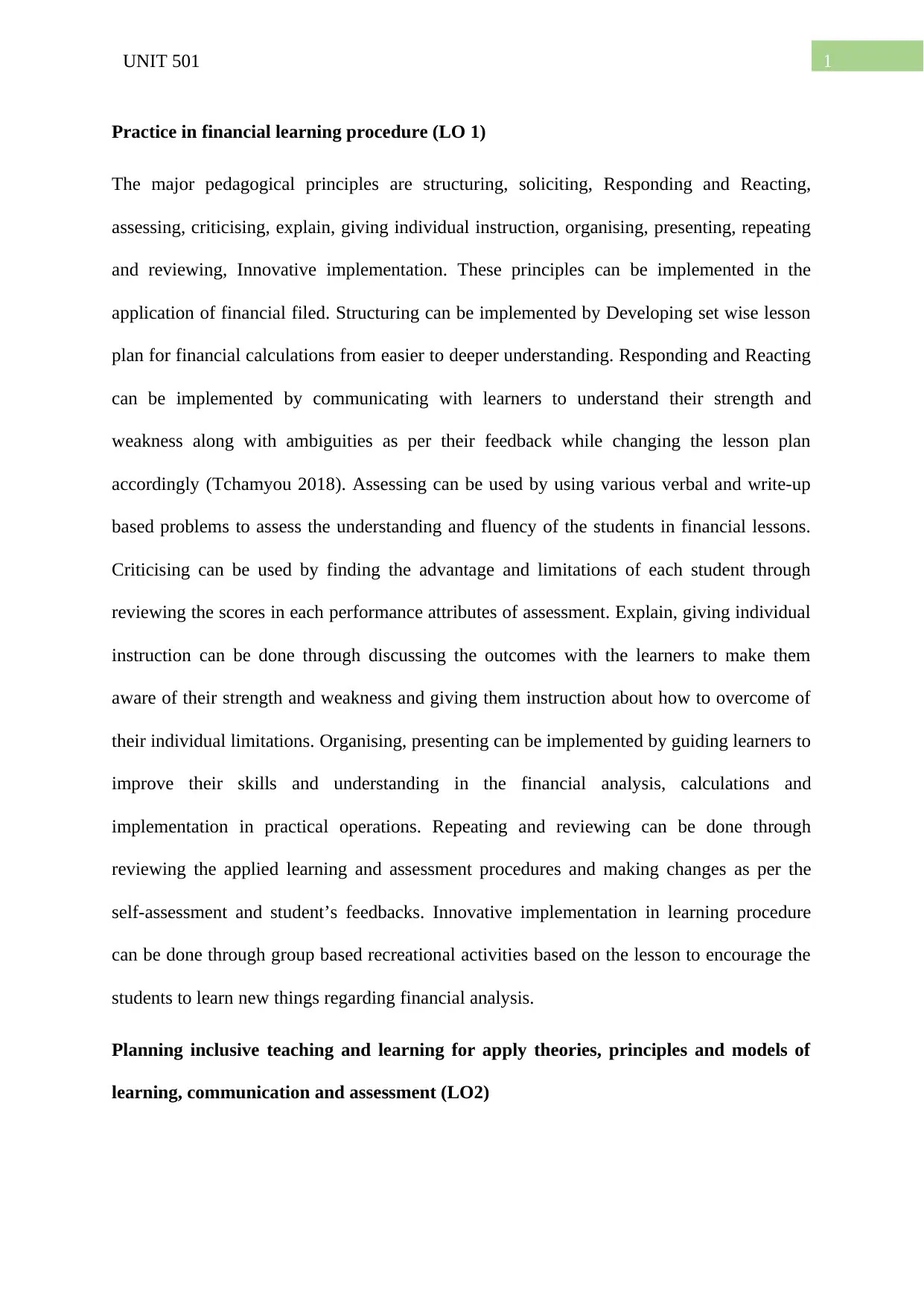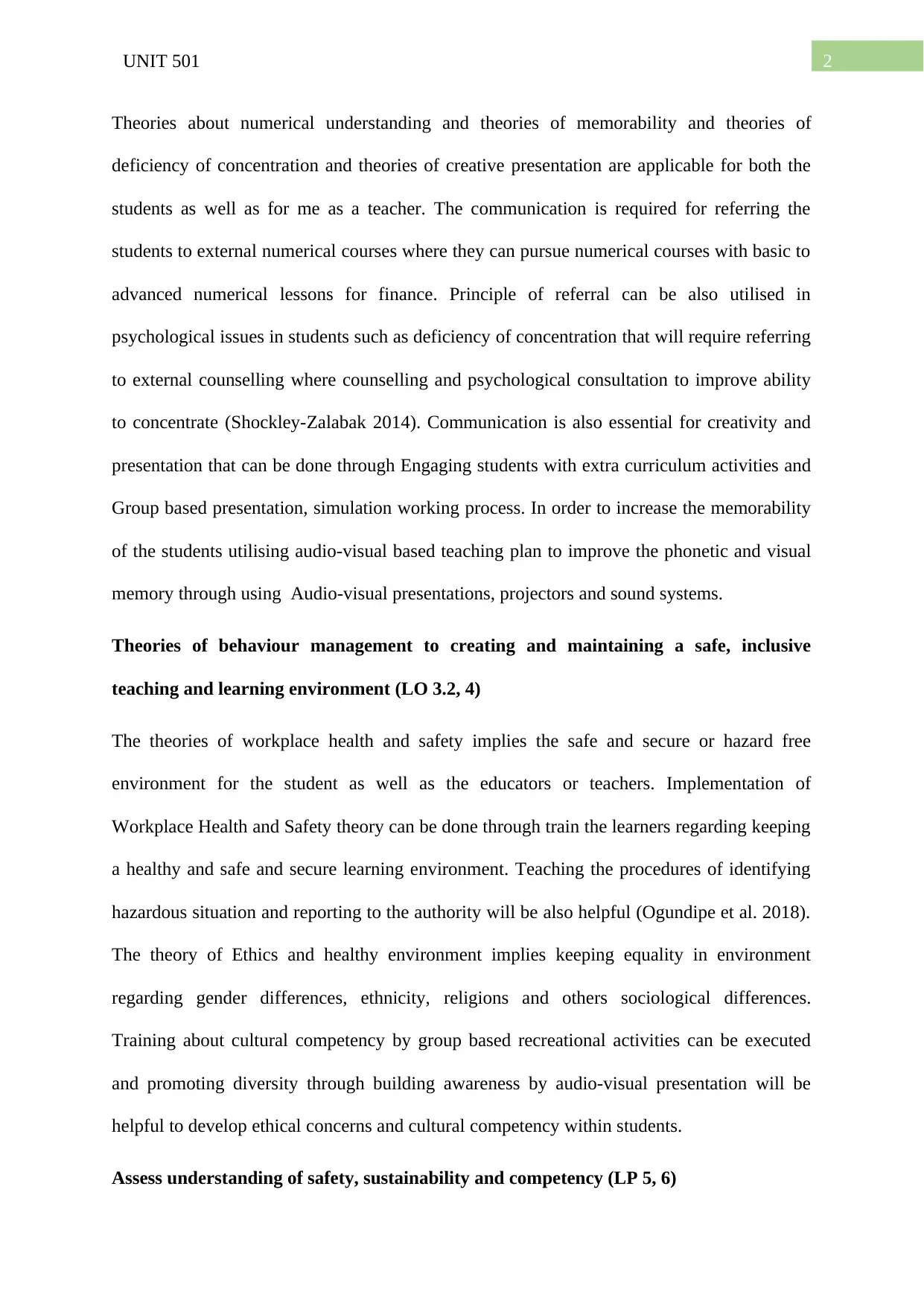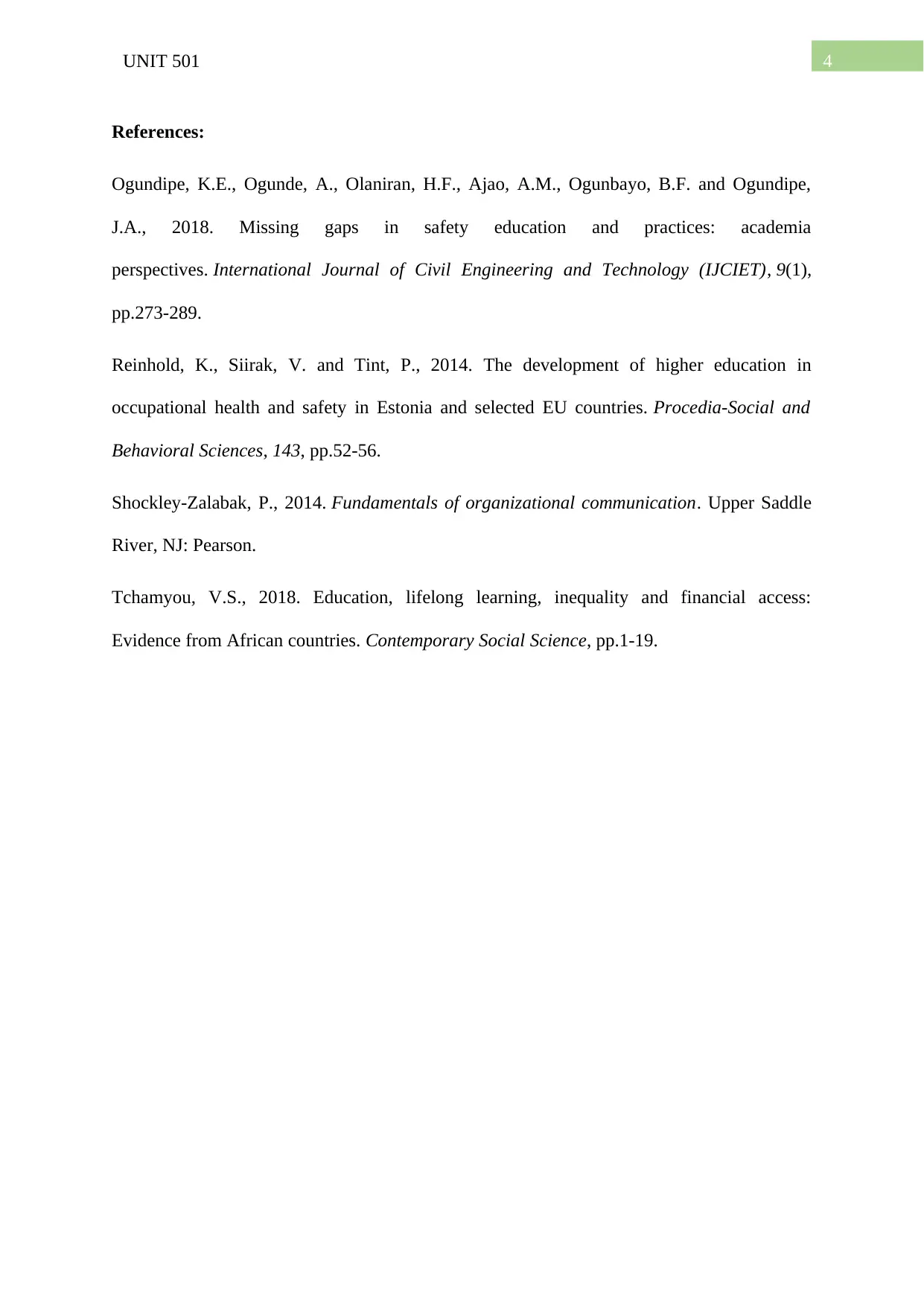Unit 501: Financial Learning and Assessment in Education Report
VerifiedAdded on 2022/08/27
|5
|1005
|19
Report
AI Summary
This report, addressing Unit 501, delves into the development of teaching, learning, and assessment within education and training, specifically focusing on financial learning. It outlines key pedagogical principles such as structuring, responding, assessing, and innovative implementation, demonstrating their application in a financial context. The report also explores inclusive teaching and learning strategies, incorporating theories of numerical understanding, memorability, and behaviour management to create a safe and effective learning environment. It emphasizes the importance of communication, particularly in referring students to external resources and fostering creativity through extracurricular activities. Furthermore, it examines the assessment of health, safety, sustainability, and competency, suggesting assessment methods such as oral exams, written assessments, and observations. The report concludes with a reflection on the advantages and limitations of the presented material, highlighting the significance of health and safety components and the need for detailed planning in lesson and assessment design. The author also provides references to support the arguments presented in the report.
1 out of 5











![[object Object]](/_next/static/media/star-bottom.7253800d.svg)